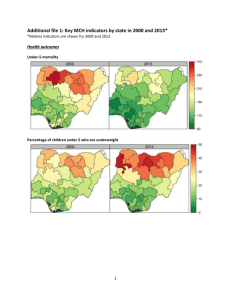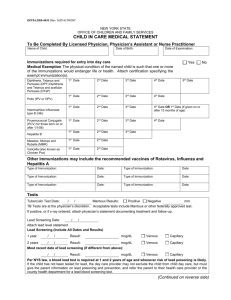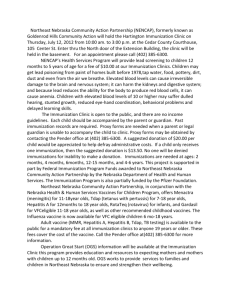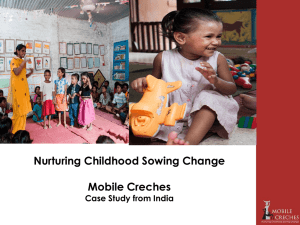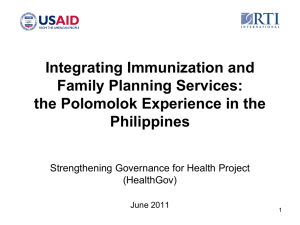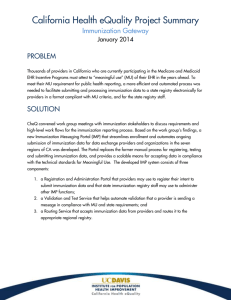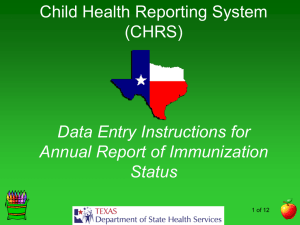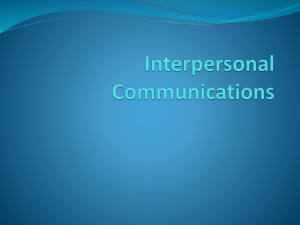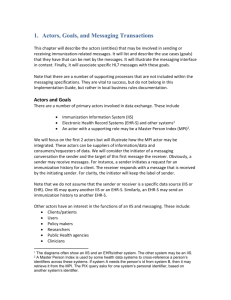International J. of Healthcare and Biomedical Research , Volume: 03
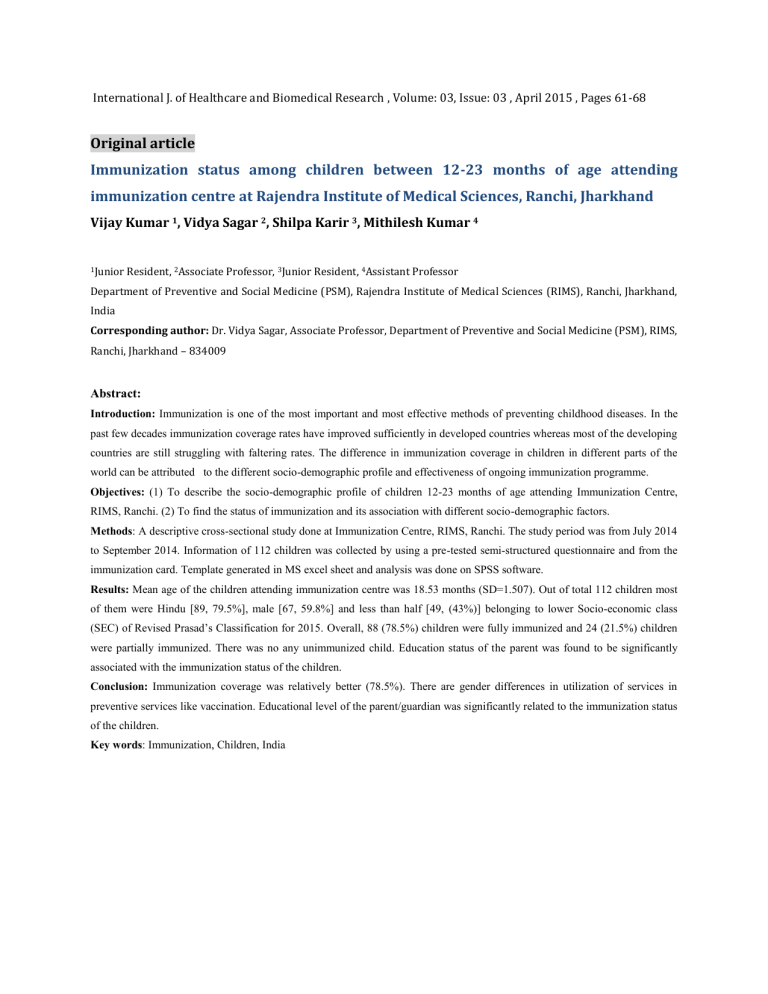
International J. of Healthcare and Biomedical Research , Volume: 03, Issue: 03 , April 2015 , Pages 61-68
Original article
Immunization status among children between 12-23 months of age attending immunization centre at Rajendra Institute of Medical Sciences, Ranchi, Jharkhand
Vijay Kumar
1
, Vidya Sagar
2
, Shilpa Karir
3
, Mithilesh Kumar
4
1 Junior Resident, 2 Associate Professor, 3 Junior Resident, 4 Assistant Professor
Department of Preventive and Social Medicine (PSM), Rajendra Institute of Medical Sciences (RIMS), Ranchi, Jharkhand,
India
Corresponding author: Dr. Vidya Sagar, Associate Professor, Department of Preventive and Social Medicine (PSM), RIMS,
Ranchi, Jharkhand – 834009
Abstract:
Introduction: Immunization is one of the most important and most effective methods of preventing childhood diseases. In the past few decades immunization coverage rates have improved sufficiently in developed countries whereas most of the developing countries are still struggling with faltering rates. The difference in immunization coverage in children in different parts of the world can be attributed to the different socio-demographic profile and effectiveness of ongoing immunization programme.
Objectives: (1) To describe the socio-demographic profile of children 12-23 months of age attending Immunization Centre,
RIMS, Ranchi. (2) To find the status of immunization and its association with different socio-demographic factors.
Methods : A descriptive cross-sectional study done at Immunization Centre, RIMS, Ranchi. The study period was from July 2014 to September 2014. Information of 112 children was collected by using a pre-tested semi-structured questionnaire and from the immunization card. Template generated in MS excel sheet and analysis was done on SPSS software.
Results: Mean age of the children attending immunization centre was 18.53 months (SD=1.507). Out of total 112 children most of them were Hindu [89, 79.5%], male [67, 59.8%] and less than half [49, (43%)] belonging to lower Socio-economic class
(SEC) of Revised Prasad’s Classification for 2015. Overall, 88 (78.5%) children were fully immunized and 24 (21.5%) children were partially immunized. There was no any unimmunized child. Education status of the parent was found to be significantly associated with the immunization status of the children.
Conclusion: Immunization coverage was relatively better (78.5%). There are gender differences in utilization of services in preventive services like vaccination. Educational level of the parent/guardian was significantly related to the immunization status of the children.
Key words : Immunization, Children, India
